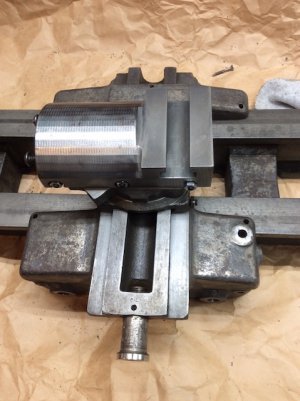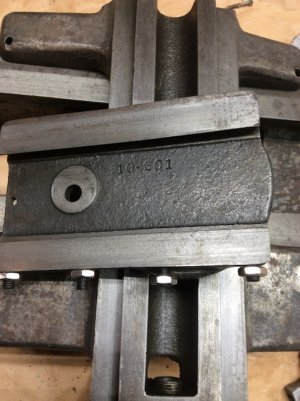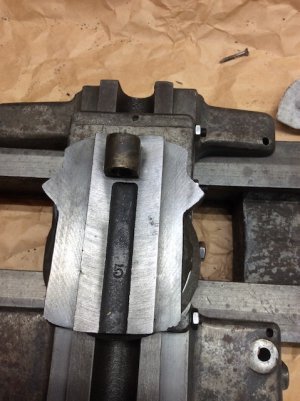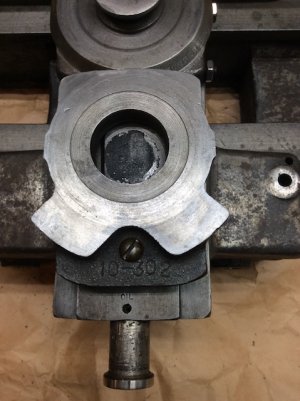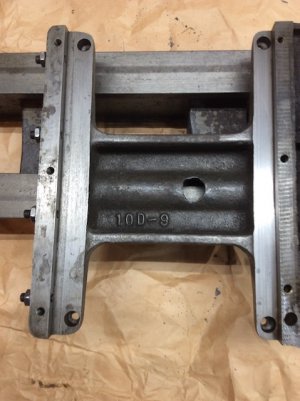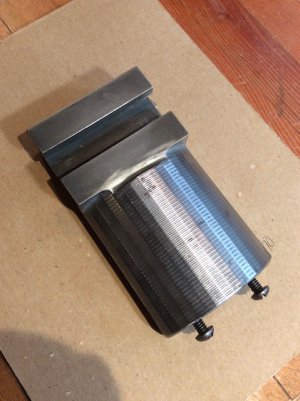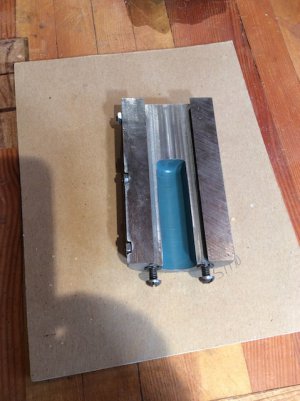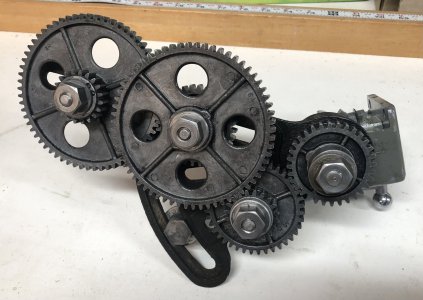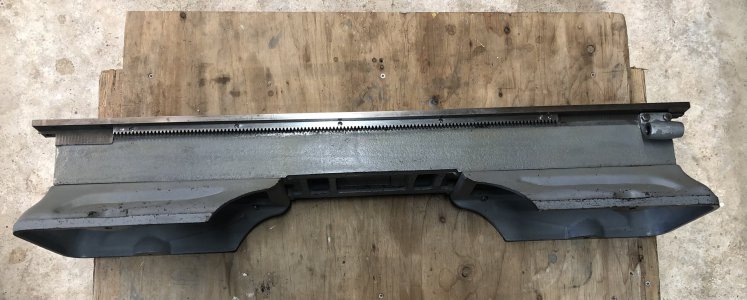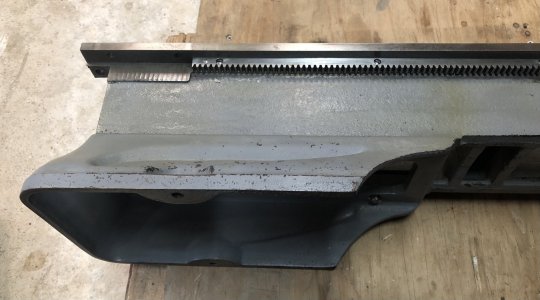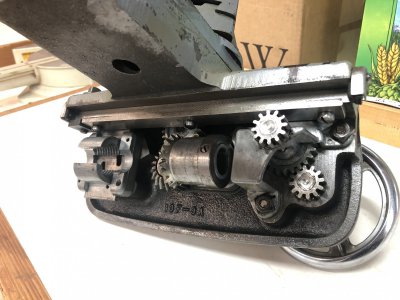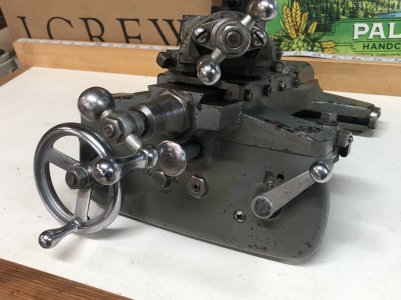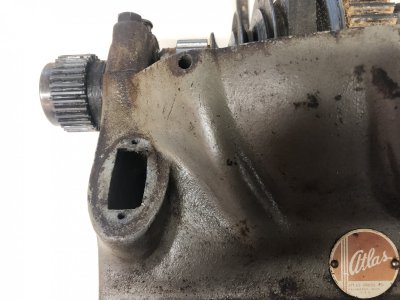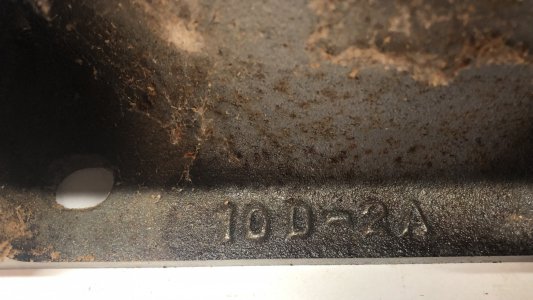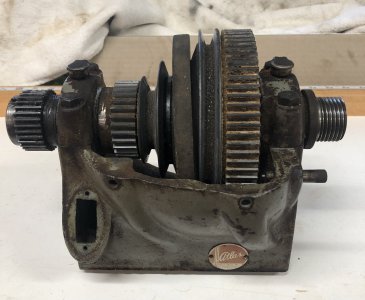For the benefit of the probably few who will be interested, here is the "other story" that I was referring to in a post yesterday.
First, to get this at the top, one of the two 10" parts list that we have that actually gives the part number of the bare headstock casting is the bad photos and list one on the 10E. We have nothing directly on the 10D and the several illustrated parts lists that we have on the 10F only show the part number for the complete headstock assembly. So if any of you currently have your headstock off of the bed, please find the part number in the casting and send it to me at my user ID plus at CS.com. The number, which will be raised characters, should be found under the bottom of the headstock. It might be visible if one were to roll the entire lathe upside down or go at it with lights and mirrors but that would be difficult and I only know from one example that it is on the side rather than end but don't know whether front or rear side.
The part number should be in one of these formats:
10-2 (that would be on the earliest version).
10A-2
10A-2A
10D-2
10D-2A
10D-2B
etc.
With the part number will be most useful, but I also need the following:even if your headstock isn't off of the bed.
Part Number
Lathe Model Number off of nameplate (if present)
Machine Serial Number (stamped in front way near tailstock end)
Babbit or Timken Bearings
Vertical or Horizontal Countershaft (if known)
Bed Length (36, 42. 48, or 54)
Shape of protrusion from casting where motor ON/OFF switch is mounted. Known choices are:
None (if switch is house type mounted in electrical box, or separate reversing switch, so state, but still answer the next three questions)
Oval with hole in center of flat for mounting switch
Shape of hole, either round or rectangular or ?
Rectangular with rectangular hole in flat that clears switch body. Switch mounts to plate.
The currently known 10F illustrated parts lists begin with 10L-1A which introduced the Pick-O-Matic in January, 1946, and end with 10L-6 in June, 1966. Plus we have 10L-36-2 on headstocks and vertical countershafts dated May, 1947. All of these have three things in common. The drawings all show the rectangular switch protrusion, the photographs on the front covers all show the oval switch protrusion, and none of them give a part number for the headstock castings. I had for a while assumed that the drawings were wrong. But it turns out that the photos are wrong.
We do have one parts list (of the partial section view style, not illustrated) that does show part numbers for the Timken bearing headstock main casting. But the part number shown on the section view is 10A-2A while the one shown in the parts list right below is 10A-2B. So there is no indication as to whether that means 10A-2A is for the oval switch plate and 10A-2B for the rectangular. or whether one is a typo. Some data from actual headstock castings will answer that question.
 Painting the S.N area with the bluing and or then wiping it off might bring up the contrast, Worth trying, anyway. A photo of the top of the cross slide without the compound swivel would give a S/N break-point . A photo of the front of the headstock could help. Anyone else is welcome to chime in.
Painting the S.N area with the bluing and or then wiping it off might bring up the contrast, Worth trying, anyway. A photo of the top of the cross slide without the compound swivel would give a S/N break-point . A photo of the front of the headstock could help. Anyone else is welcome to chime in.

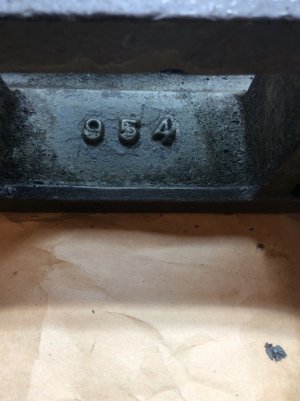
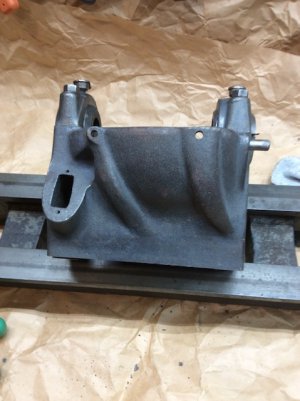
![serial # DorP7605[Sor8]?.JPG](/data/attachments/347/347971-0da28d7b1c79c30d87c8fa8d53e7e333.jpg)
